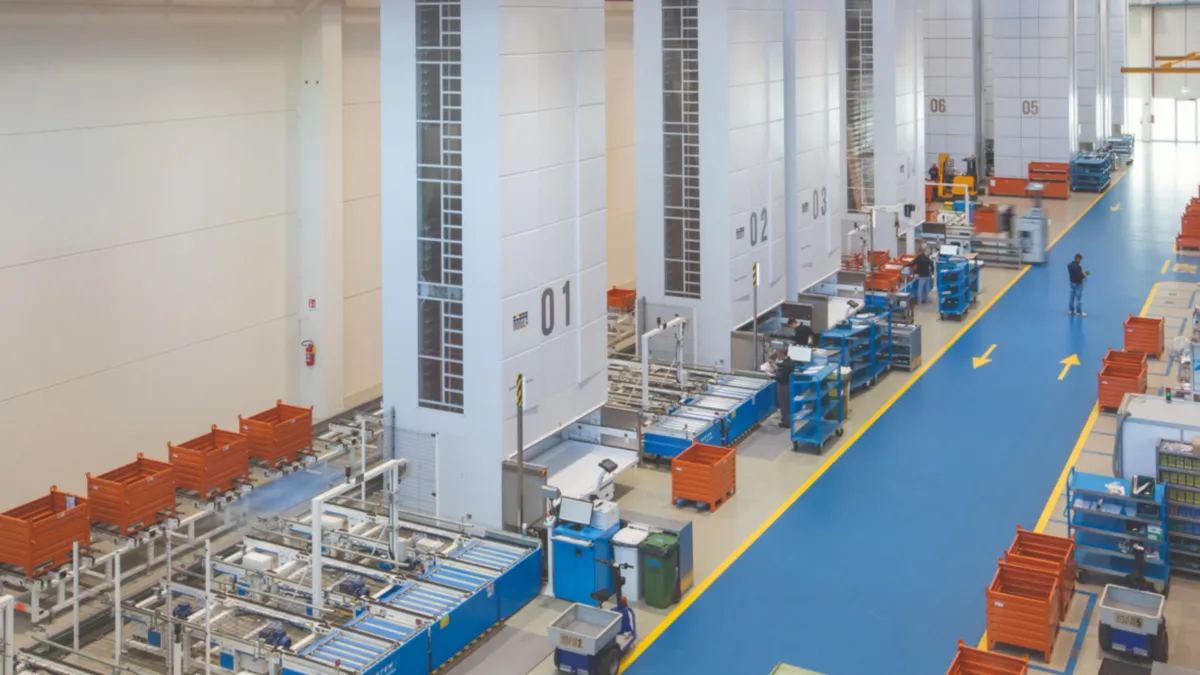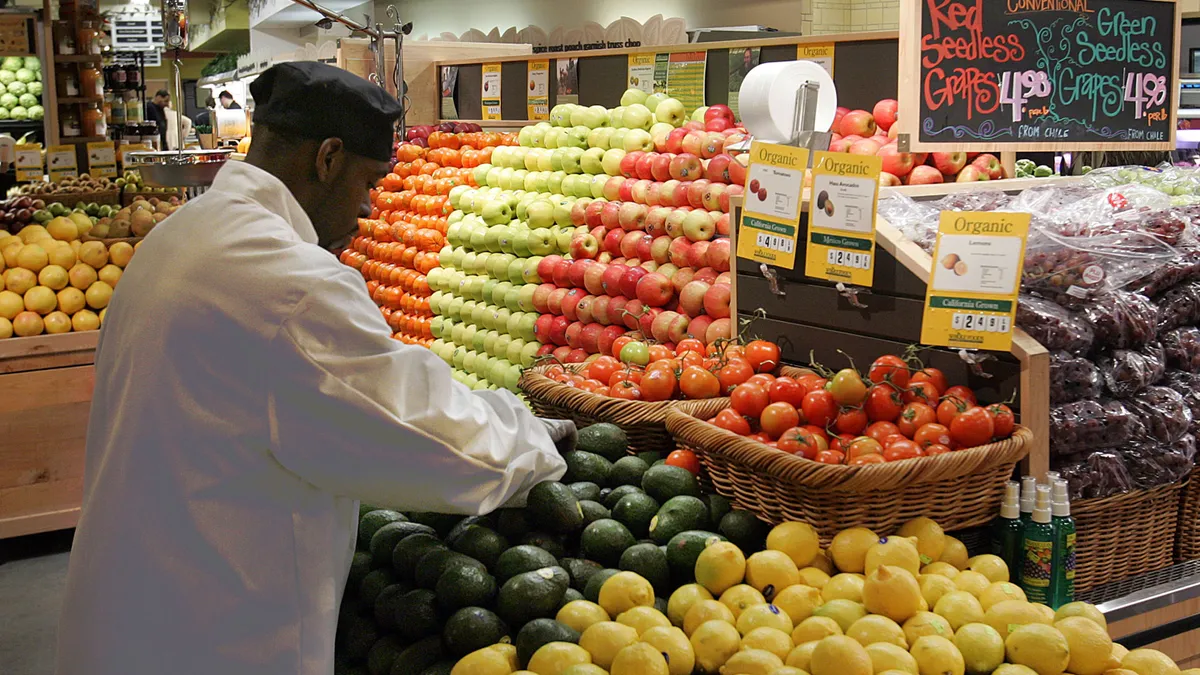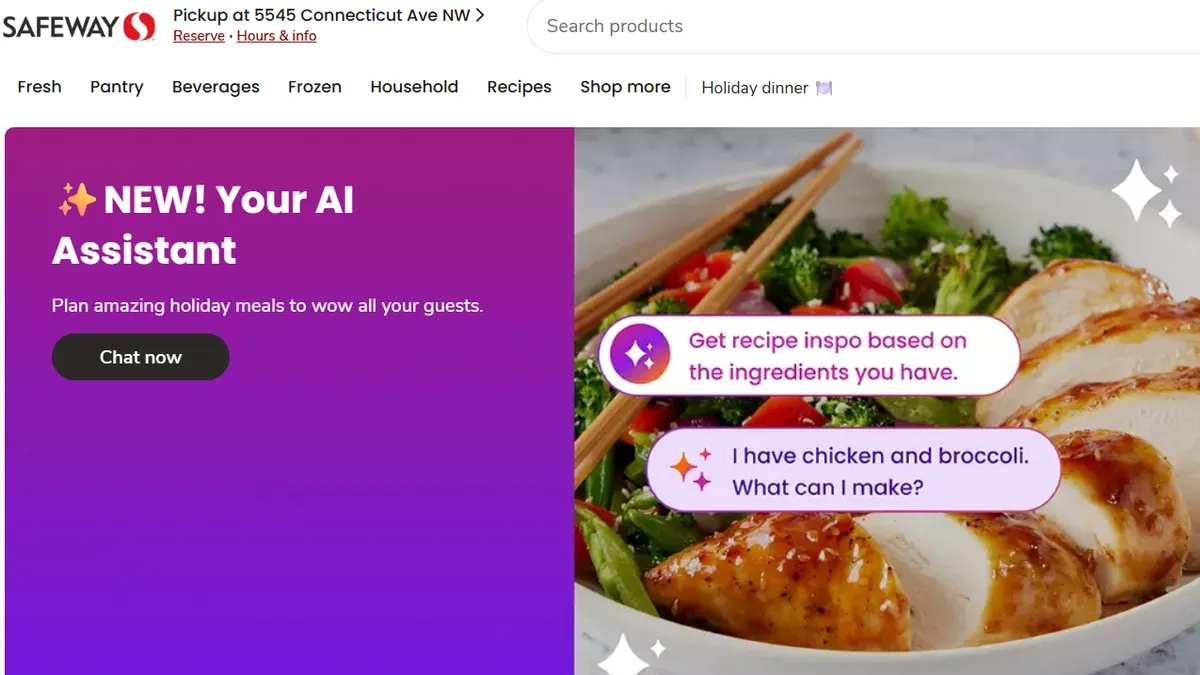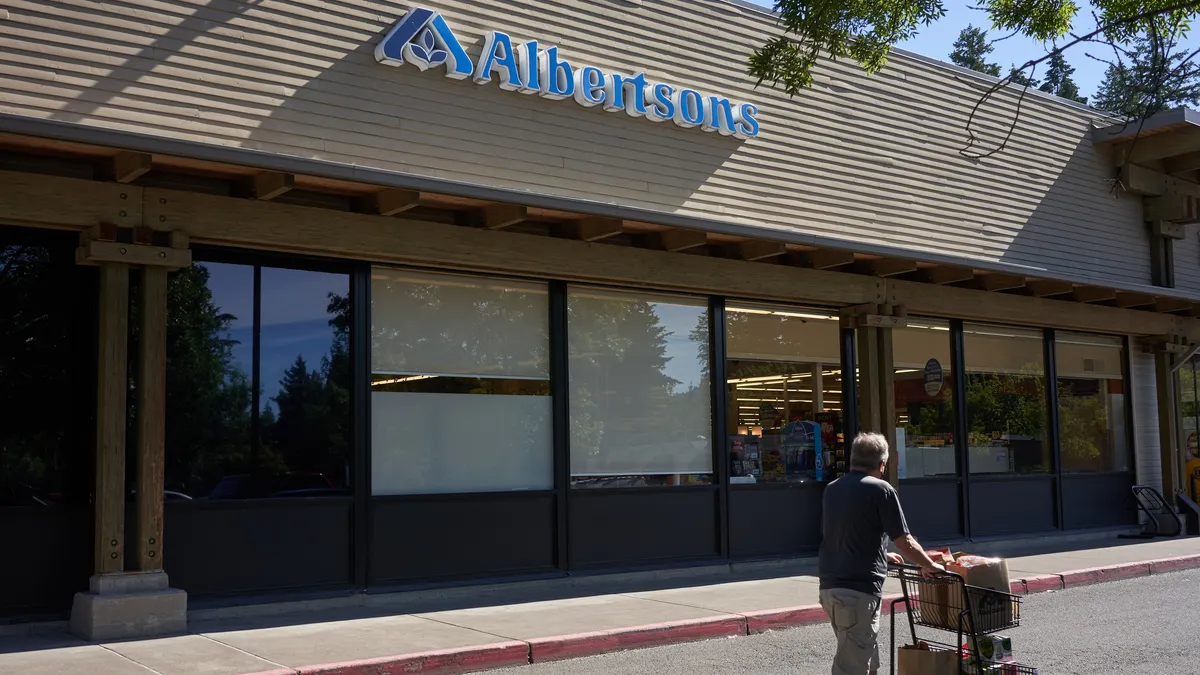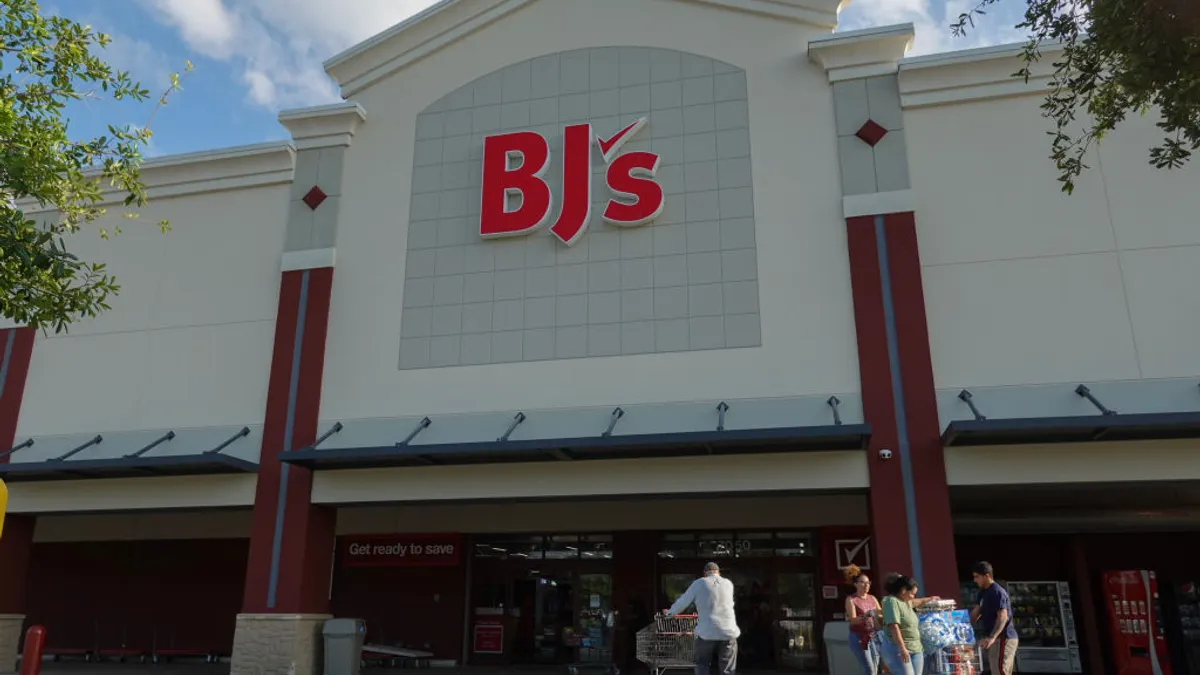Spurred by the sustained increase in e-commerce business sparked by the pandemic, grocers are stepping up their interest in vertical storage systems, which allow workers to more efficiently assemble orders and can be less costly than other types of automated equipment.
The mechanized units, which stack totes loaded with goods on shelves in multistory towers that can be more than 40 feet tall, have long been used in industrial settings, where they are prized for their ability to store and rapidly retrieve parts while requiring a minimum of floor space.
Those qualities are now catching on with food retailers, which have until recently displayed relatively little interest in vertical storage systems even as they have invested in other forms of automation, said Max Gigli, CEO of Modula, an Italy-based vertical storage equipment manufacturer that works with grocers in Europe and been in contact with U.S. supermarket chains.
“The portfolio of customers that we have reached has changed a lot,” Gigli said. “Manufacturing is still our bread and butter, but more and more we see customers … in the retail sector and in the grocery sector.”
Vertical storage systems, also known as vertical lift modules (VLMs), can handle a variety of tasks for retailers, including holding products for distribution to stores or inclusion in online orders. The units can also store completed orders until customers are ready to pick them up or delivery personnel arrive to transport them to people’s homes.
“The portfolio of customers that we have reached has changed a lot. Manufacturing is still our bread and butter, but more and more we see customers … in the retail sector and in the grocery sector.”

Max Gigli
CEO, Modula
In a sign of the grocery industry’s growing interest in VLMs, Modula officials spoke in September at Groceryshop with representatives of companies including H-E-B, Kroger, Whole Foods Market, Giant Eagle, Associated Wholesale Grocers and Lowes Foods, according to David Lind, the company’s director of business development. Modula also connected at the trade show with U.K. grocery chain Tesco, according to Lind.
Last year, Wakefern Food, the East Coast grocery cooperative that includes banners like ShopRite, Dearborn Market and The Fresh Grocer, said it had begun testing a VLM from Modula rival Kardex Remstar in the Home department at a ShopRite store in Kingston, New York.
A lower-cost alternative to MFCs
Vertical storage systems hold promise for grocers because of their relatively low cost compared with automated micro-fulfillment centers (MFCs), said Marc Wulfraat, founder and president of MWPVL International, a Montreal-based supply chain consultancy that advises grocery chains.
“I started looking at [VLMs] and paying attention because I really think there's a future here in North America for this technology,” Wulfraat said.
VLMs are also attractive because they are less complex than MFCs, which can cut down on maintenance costs, Wulfraat added. “You can have somebody who's doing other forms of maintenance in the building … take care of the equipment” instead of needing dedicated technicians to deal with mechanical issues, he said, referring to VLMs.
Still, Wulfraat said, it could take time for interest among food retailers in vertical storage technology to ramp up, much as MFC technology has been somewhat slow to take off. “It always takes a little bit of time for people to catch on and understand new solutions that come to the market, particularly in the automation sector,” he said.
Wulfraat said VLMs can be especially useful in helping retailers store and fulfill orders for items like dry goods that can be stored at ambient temperatures but need to always be on hand, adding that he thinks they will gain momentum with grocers in the U.S. in distribution centers before making their way to supermarket backrooms or dark stores.
“It's an area of business that everybody struggles with because your pick line gets elongated by all of these slow-moving items that have to be stocked in the warehouse, and you never seem to have enough floor space for them,” Wulfraat said.
Gigli said Modula’s ongoing efforts to build its business with grocers in the United States are taking shape as it works on vertical storage initiatives for food retailers in Italy, which have been ahead of food retailers in other countries in embracing the concept.
Before the pandemic began, Modula installed about a dozen VLMs at a distribution center that serves stores operated by Italian grocery chain Conad, but the technology company didn’t see much interest for its products from other grocers until 2020, when it began working with Tulips, an Italian e-grocer, said Gigli. Modula is also working with Coop, another grocer in Italy, he said.
As e-commerce demand has leveled off following the surge brought on by the pandemic, Modula is positioning the relatively low cost of its gear as a key advantage compared with MFCs, which can cost several million dollars or more to build. By comparison, Modula’s automated storage towers typically cost about $150,000 each to install, Lind said.
Gigli added that Modula emphasizes its ability to install its equipment quickly and rapidly bring on additional storage capacity when it has discussions with retailers. It takes the company four to six months from when it receives an order for a vertical storage unit until installation is complete, he said.
According to Gigli, workers can summon goods and orders using a control panel at the base of a VLM, or the control software can be integrated with a grocer’s online grocery platform, allowing the unit to automatically ferry items to a worker when an order comes in from a shopper.
The units can also be insulated to maintain interior temperature and humidity levels, Lind said.
Setting the temperature of individual totes
As they start to pay closer attention to VLMs, grocers are also showing increased interest in technology that can keep food refrigerated or frozen on a tote-by-tote basis instead of requiring goods to be kept in chilled rooms that may have a lot of empty space, said Dana Krug, senior vice president for cold chain at Phononic, a supplier of temperature-controlled totes compatible with VLMs and MFCs.
Phononic’s totes feature solid state cooling units the size of a smartphone that can bring the interior of the unit from room temperature down to a specific temperature in under an hour, Krug said. The totes can also be controlled remotely, allowing retailers to turn the cooling system on or off as needed even when a tote is stored inside a VLM. That makes the equipment, which depends on carbon dioxide and water instead of conventional refrigerant, much more efficient than compressor-based cooling systems, Krug said.
While companies in sectors such as healthcare and the life sciences have used the company’s cooling technology for more than a decade, retailers have only been showing interest in its equipment for about three years, Krug said. The company is not ready to identify retailers it is working with, he said.
Phononic displayed its totes at Groceryshop inside a vertical storage unit from Vidir Vertical Solutions, a VLM supplier it is partnering with to demonstrate the technology to food retailers. Vidir has installed VLMs for retailers including Home Depot, Kohl’s and Walmart, according to the company’s website.
“The beauty of the vertical racking and our system working with it is that flexibility to flex your order capacity at any given time. If I need more order capacity, I add more totes … it doesn't mean I'm taking up more space inside the store,” said Krug.


